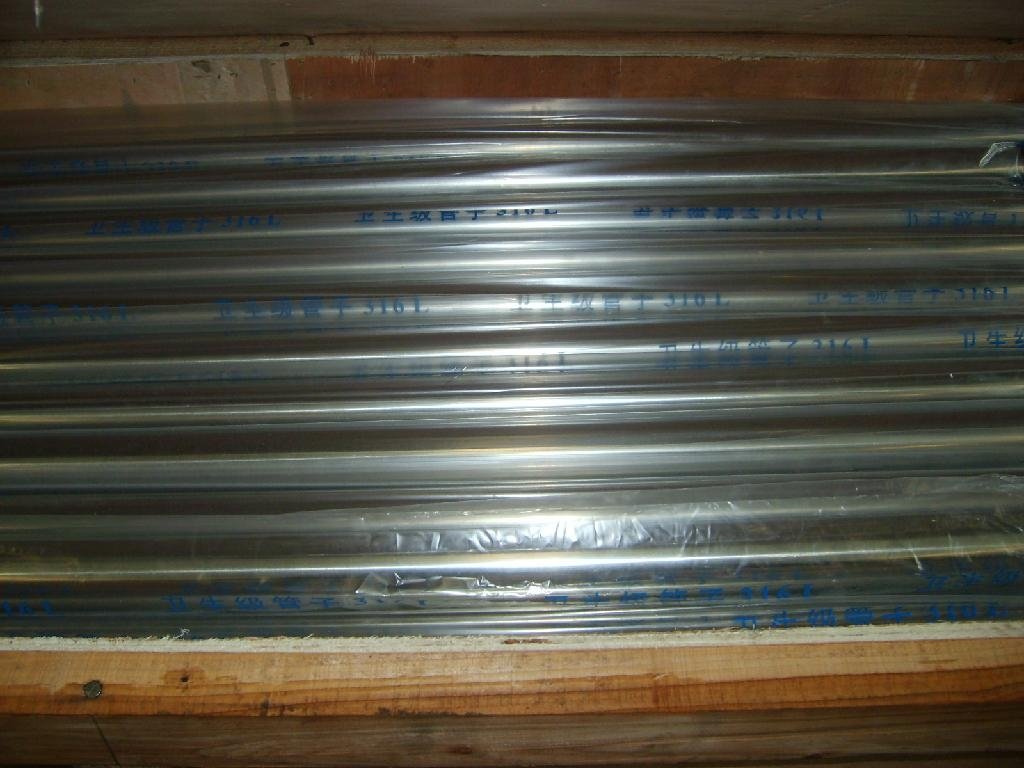Bright annealed stainless steel tube
Model No.︰JY-BASST
Brand Name︰JY
Country of Origin︰China
Unit Price︰-
Minimum Order︰1 ton
Product Description
Product Introduction: Stainless Steel Tube Bright Annealing/Annealed-Oxygen Annealing
Overview
Stainless steel tubes are essential components across various industries due to their corrosion resistance, durability, and attractive appearance. The process of bright annealing, paired with oxygen annealing, enhances the properties of these tubes, elevating them to meet high industry standards. This document outlines the specifications, grades, and standards relevant to stainless steel tubes treated with bright annealing and oxygen annealing.
Delivery Condition
The stainless steel tubes are delivered in two main conditions: bright annealed and outer diameter (O/D) polished. The O/D polishing process can achieve various grits, commonly including 180, 240, 320, and 400, allowing customization based on client requirements for aesthetic and functional purposes. Bright annealed tubes feature a smooth surface and high reflectivity, making them ideal for applications where appearance is critical, as well as offering enhanced resistance to oxidation.
Grades (UNS)
The stainless steel tubes are available in a range of grades, catering to diverse operational environments and requirements. The following is a list of the primary grades available:
- 304/304L/304H (1.4301/1.4306/1.4948)
- 316/316L (1.4401/1.4404)
- 316Ti (1.4571)
- 321 (1.4541)
- 309S (1.4833)
- 310S (1.4845)
- 317L (1.4438)
- 321H (1.4878)
- 347H (1.4550)
- Duplex 2205 (1.4462)
- S31803
- Super Duplex 2507
These grades are chosen based on their chemical composition, strength, and resistance to various corrosive environments. For example, grade 316/316L contains molybdenum, which enhances its resistance to pitting and crevice corrosion, making it suitable for marine and chemical processing applications.
Industry Standards
To ensure quality and reliability, the production of stainless steel tubes conforms to several internationally recognized standards. These standards provide guidelines for materials, testing, and usage, ensuring products meet industry requirements. Key standards include:
European Standards:
- EN 10216-5: Specifies technical delivery conditions for seamless steel tubes for pressure purposes.
- DIN 17456: Covers the technical delivery conditions of stainless steel products.
- DIN 17458: Pertains to stainless steel tubular products.
Chinese Standards:
- GB/T 14975: Standards for seamless steel tubes for fluid transport.
- T14976: Covers specifications for welded stainless steel tubes.
- T13296: Pertains to stainless steel tubes for heat exchangers.
- GB 5310: Standards for seamless steel tubes for high-pressure boilers.
American Standards:
- ASTM A213: Standard specification for seamless ferritic and austenitic alloy-steel boiler, superheater, and heat-exchanger tubes.
- ASTM A269: Covers stainless steel pipe for general service.
- ASTM A312: Pertains to seamless and welded austenitic stainless steel pipes.
- ASTM A511: Standard specification for seamless stainless steel mechanical tubing.
- ASTM A789/A790: Covers seamless and welded stainless steel tubing for general corrosive service and for duplex stainless steels.
Japanese Standards:
- JIS G3459: Specification for stainless steel pipes for pressure service.
- JIS G3463: Covering stainless steel pipes for chemical and food industry applications.
Russian Standards:
- GOST 9940: Sets basic requirements for corrosion-resistant seamless tubes.
- GOST 9941: Specifies standards for welded tubes.
Application and Benefits
Bright annealed stainless steel tubes are widely used in industries such as:
- Chemical Processing: Taking advantage of their resistance to a broad range of corrosive chemicals.
- Food and Beverage: Ensuring compliance with strict hygiene standards due to their smooth surfaces.
- Pharmaceutical: Offering non-reactive properties necessary for sensitive manufacturing processes.
- Oil and Gas Industry: Providing reliable service in rigorous conditions, thanks to their strength and durability.
The benefits of using bright annealed stainless steel tubes include enhanced corrosion resistance, improved aesthetic appeal, and reduced maintenance costs due to their durability.
Conclusion
Bright annealing and oxygen annealing processes play a crucial role in enhancing the properties of stainless steel tubes. By adhering to stringent industry standards across multiple nations and offering a variety of grades, manufacturers can ensure that their products meet the diverse needs of their customers. The result is a superior product that excels in performance, longevity, and visual appeal, meeting the demands of modern industries. For companies looking for
performance and reliability in stainless steel tubing, the bright annealed stainless steel tubes represent an optimal choice.
Quality Assurance and Testing
To maintain high standards in production, all stainless steel tubes undergo rigorous quality assurance processes. These may include non-destructive testing, visual inspections, and dimensional checks. Among the standard tests performed are:
- Hydrostatic Tests: Ensure the integrity of the pipe under pressure.
- Ultrasonic Testing: Detects any internal defects that might compromise performance.
- Mechanical Testing: Evaluates tensile strength, elongation, and hardness to ensure the material meets specifications.
Additionally, third-party inspections and certifications are often sought to validate compliance with international standards, further ensuring that the products meet or exceed expectations.
Customization Options
Recognizing that different applications may require specific characteristics, manufacturers frequently offer customization options for stainless steel tubes. This can include adjustments in dimensions (length, diameter), wall thickness, and surface finishes beyond standard polishing grits. Such flexibility allows customers to procure tubes that fit their project specifications accurately.
Some of the finishing options include pickling and passivation, which enhance corrosion resistance, and embossed or engraved surfaces for branding or identification purposes.
Sustainability Considerations
In today's market, sustainability is a critical concern for many industries. Stainless steel is inherently a sustainable material due to its recyclability. The production processes for bright annealed stainless steel can also be optimized to reduce energy consumption and waste. Manufacturers are increasingly looking at ways to minimize environmental impact, such as utilizing energy-efficient technologies in production and sourcing raw materials responsibly.
Incorporating sustainable practices not only benefits the environment but can also improve the overall image of companies in a competitive marketplace where eco-consciousness is valued by clients and partners alike.
